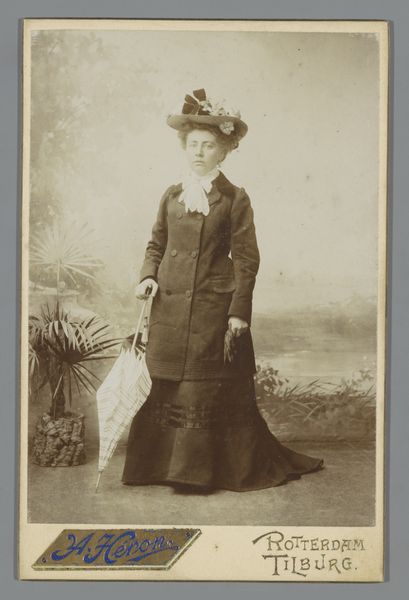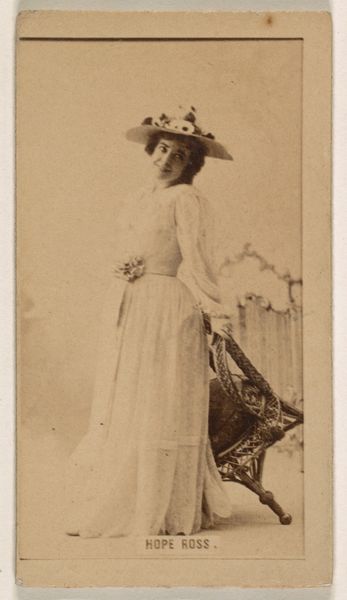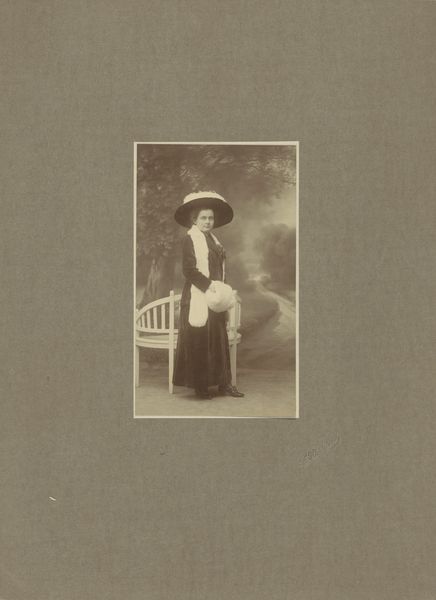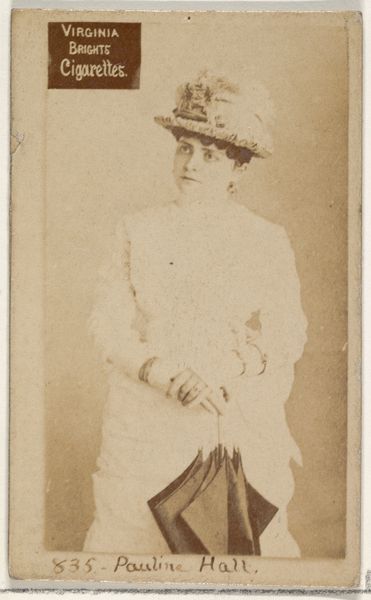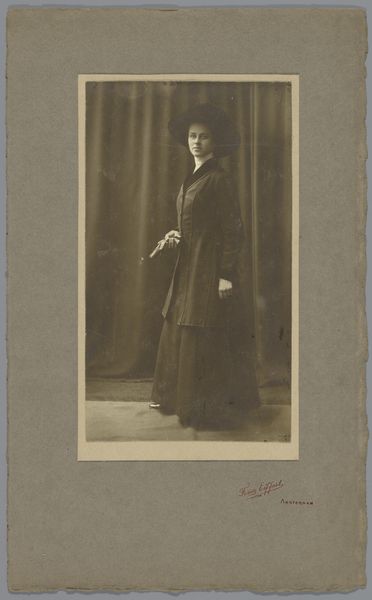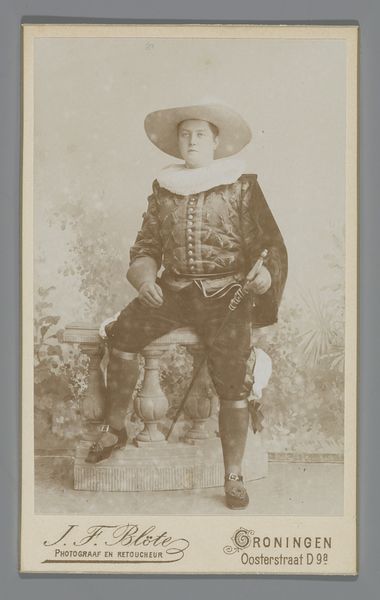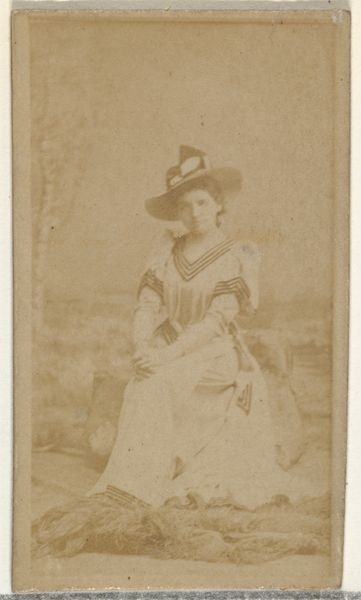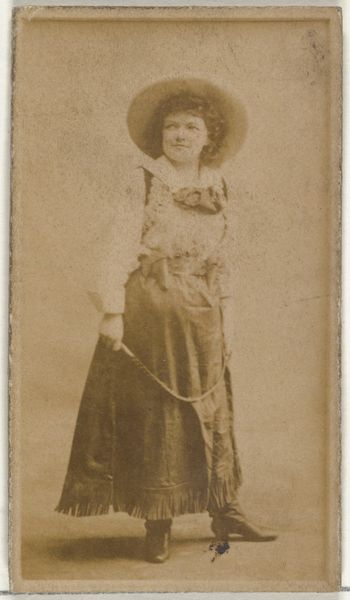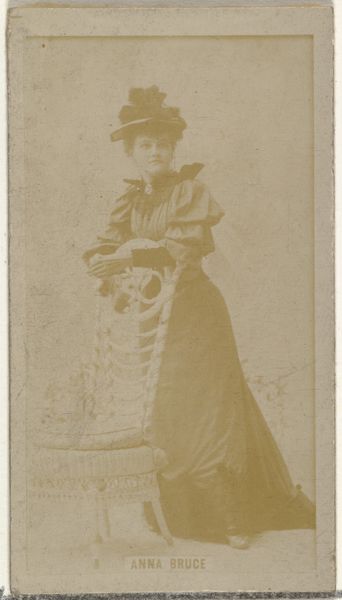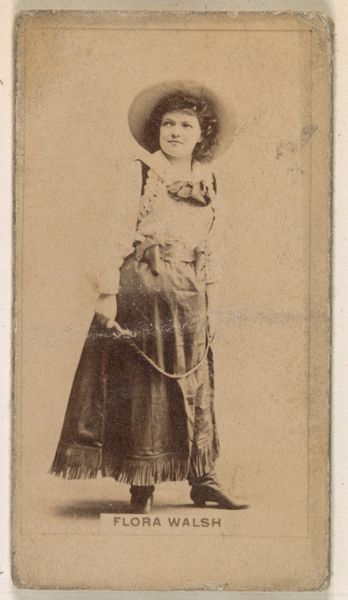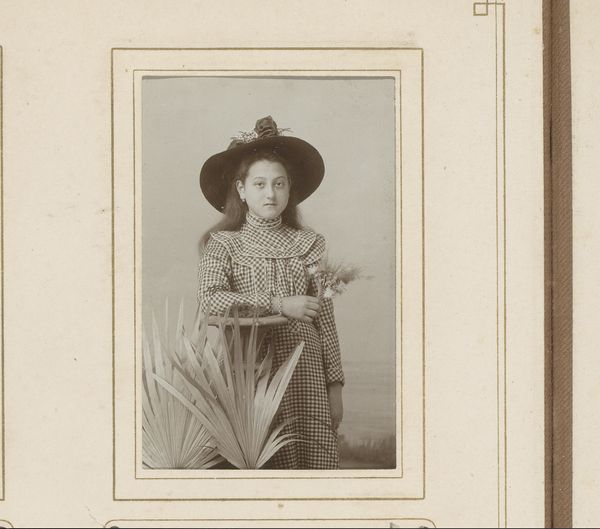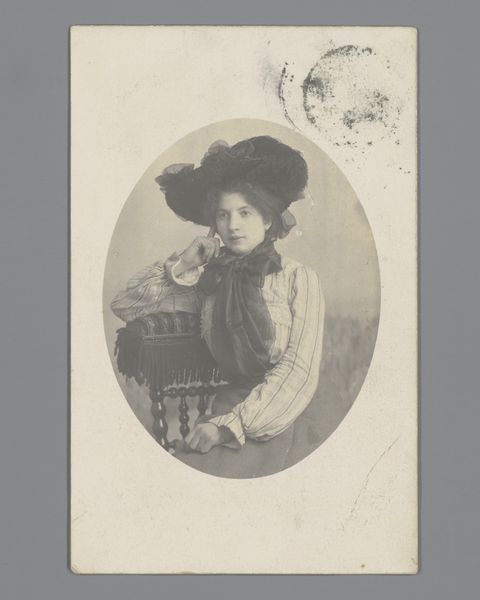
photography, gelatin-silver-print
#
aged paper
#
toned paper
#
pictorialism
#
photography
#
coloured pencil
#
gelatin-silver-print
Dimensions: height 253 mm, width 183 mm
Copyright: Rijks Museum: Open Domain
Curator: Welcome. We are standing before a piece entitled "Portret van Zaidie Viljoen," believed to have been created sometime between 1880 and 1920. The work is a gelatin-silver print. Editor: It immediately strikes me as quite composed. The grayscale and the symmetrical framing create a sense of formality, almost austerity, despite the delicate, light-catching hat. Curator: I think that austerity you perceive speaks to the socio-political positioning of women during this era. Here is Zaidie Viljoen, probably a woman from the middle-upper class given her dress and adornments, whose very presentation in this formal portrait signals agency within certain patriarchal confines. How does her attire—the tailored suit and large brimmed hat—help either reinforce or subvert ideas around turn-of-the-century femininity? Editor: Good point. Observing more closely, there's a certain textural contrast created between the softness of the hat, almost cloud-like in its light diffusion, and the severe cut of her jacket. And note the tonal values in this print. There are deep blacks, stark whites, but then very soft, graduating greys that give the work depth but retain the formal character you’ve spoken of. It is not overtly romantic in pictorial technique, even if it shares its broader aesthetic values. Curator: The photograph is certainly intriguing in its quiet intensity. In a time rife with social stratification and growing tensions between European settlers and native populations in South Africa, to what extent do you believe this image can act as a social artifact reflecting contemporary political anxieties? Editor: That’s a reading contingent on its original viewer, and what the sitter brings to her pose. What do you think Steger wants us to grasp when we see it now? Curator: Possibly the way images can reinforce but also disrupt existing social constructs by presenting an almost ambivalent picture of an upper middle-class woman claiming her place. I am keen to keep questioning and exploring what exactly "place" meant during those troubled years. Editor: Well, considering its balanced construction and thoughtful execution, this piece seems to offer new questions upon each visit.
Comments
No comments
Be the first to comment and join the conversation on the ultimate creative platform.
